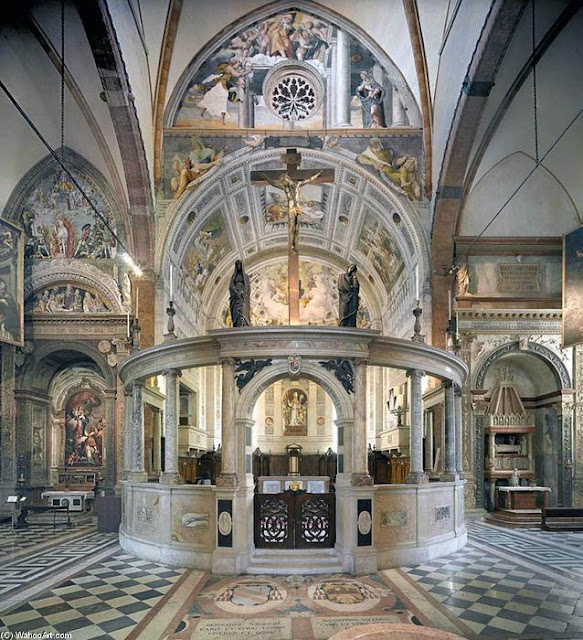This particular choir screen is a product of the Renaissance, designed by the Venetian architect Michele Sanmicheli (b. 1484, d. 1589) -- the same man who was designated the master builder of the stunning cathedral of Orvieto. It was built between the years 1534-1541 at the behest of Bishop Gian Matteo Giberti. The screen is comprised of ten columns with ten candlesticks found along the top of the choir screen -- much like the balustrade found in the Sistine Chapel. Above the entrance of the screen is a great crucifix and to either side of it, Our Lady and St. John.
 |
| Left: Our Lady Right: St. John |
The inclusion of a crucifix (not to mention Our Lady and St. John) leads to an inevitable comparison of this screen with a medieval rood screen, but as mentioned above, this screen also has similarities to a balustrade as one might see in San Marco in Venice, or in the Sistine Chapel or other churches of Rome such as S. Maria in Cosmedin. In fact, some suggest that the balustrade of Old St. Peter's may well have served as part of the inspiration for the Veronese screen. Whatever the case, the semi-circular form of this particular stricture was not typical, nor did it ever become typical (though some were made in other locations in the area, no doubt taking their inspiration from this one) and its purpose seemed to a combined mix of both providing separation of the presbytery and choir while concurrently giving an relatively open view of the altar and tabernacle -- a fucntion that was important in the counter-reformation period.
Here are some modern images of the tornacoro to give our readers a better sense of it and its relation to the altar and tabernacle:


















